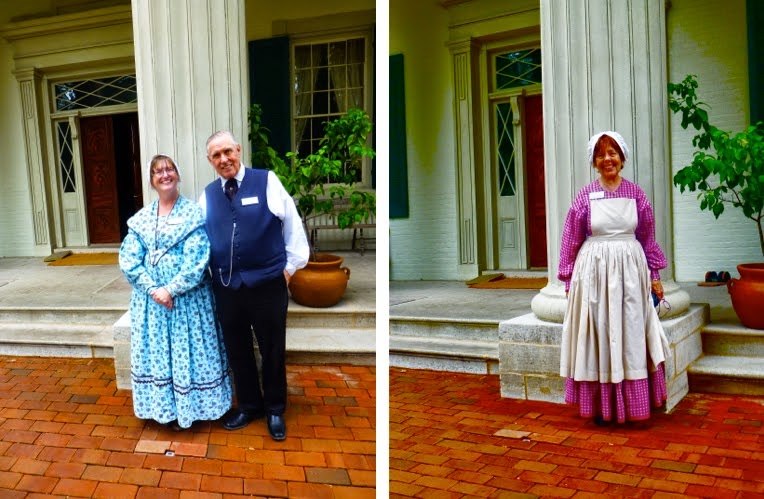Crossing the Mighty Mississippi as we started today's drive Westward.
"Fools' names and fools' faces are always seen in public places."
Now, some people really wanted to have their names seen... How did "Dean" do that?
McMinnville
Some time ago I posted on my Facebook wall some castles in America, among them Castle Gwynn in Triune, TN. A friend of Kim's from Hong Kong days, Cynthia, commented that they drive past that castle every time they go to the temple in Nashville. Second point: as I was formulating plans for driving across the States, I made the decision for us to stop at that fanciful, beautiful castle. A very nice side benefit was that we were going to drive right through McMinnville where Cynthia and her family live, so we had to see them! So, we did! And what a wonderful stop on our route it was.
We throughly enjoyed getting to know Cynthia's husband and hearing a bit of their life. They are what I would call "gentleman farmers," for they have some chickens and they raise bees—well, they have beehives, one inside!—while her husband is a real entrepreneur. It was a good visit. (We brought flowers for Cynthia, "from Kim.")
Triune
Our next stop was to try to see and photograph the Gwynn Castle, but it did not turn out too profitably. The castle is actually a private residence and thus tourists are not allowed on the grounds. We did get a partial photo of it as we were on the freeway:
Photo: http://onceuponarosehaven.blogspot.com
Photo: Bob Chu
Photo: Don
Here's the story of this fanciful structure, reminiscent of Medieval castles in Europe. A work in progress since 1970, Castle Gwynn began as a product of Mike Freeman’s imagination in a high school architecture class. A teacher instructed students to sketch their dream house. “I started drawing the plans for a medieval castle,” recalls Freeman. “In 1980, we broke ground on it.” ... People think just because I live in a castle, I’m rich. But for perspective, consider the fact that I work 12- to 18-hour days, and it has taken us 26 years to build the castle so far. I pay for it as I go, and when I run out of money, I stop building.”
 Annual Medieval Festival takes place at the castle in May—a good time to visit the site when visitors are welcome to tour most of the castle.
Annual Medieval Festival takes place at the castle in May—a good time to visit the site when visitors are welcome to tour most of the castle.
The castle bears a striking resemblance to a church building near Vaasa where we served our "latest" senior mission.
The field across our friends' house as we were leaving, anxious for the next adventure...
The Hermitage, Nashville
I suppose most everyone has heard of General Andrew Jackson, the seventh present of the United States, but perhaps not everyone has heard of his plantation which he called The Hermitage. I had not, but happened upon it as I was searching information about the Hermitage museum in St. Petersburg, Russia. Delighted to discover that there was a plantation, something I had hoped to see before they all go up in the glory of the forgotten, almost dropped in on our path, so we added it to our itinerary.
The plantation that Jackson named Hermitage was originally settled by Robert Hays who sold the 420-acre (170 ha) farm to Jackson in 1804. Jackson and his wife Rachel moved into the existing two-story log blockhouse built to resist Indian attacks. After Jackson built the main house, it was disassembled and rebuilt as two one-story buildings used as slave quarters; a part of it still stands behind The Hermitage. Initially Jackson operated the cotton farm with nine African slaves, but this number gradually grew to 44 slaves by 1820 as the farm expanded to 1,000 acres. Jackson owned the plantation from 1804 until his death at the Hermitage in 1845. He only lived at the property occasionally until he retired from public life in 1837. It is a National Historic Landmark. And yes, as it appears, he did have slaves, and he was against emancipation saying that the economy could not survive it.
Photography is not permitted inside, so I will include an interior picture from the brochure.
The guides at the Hermitage were mostly senior citizens who seemed dedicated to their "art." All were, of course, wearing period clothing and were very enthusiastic and knowledgeable.
And so ended our second day on this odyssey.
KENTUCKY: ANTEBELLUM
MISSOURI: THE OZARKS






















No comments:
Post a Comment